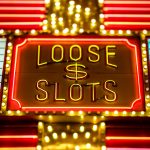Download links
Description
Bingo has a rich and varied history that traces back to 16th-century Italy, where a game called “Lo Giuoco del Lotto d’Italia” was played. This early form of the game involved players marking off numbers on cards as they were drawn from a pool, much like the modern version of bingo we know today. The game quickly spread across Europe, evolving into different forms in various countries.
In France, it became known as “Le Lotto,” and by the 18th century, it had made its way to Germany, where it was used as an educational tool to teach children about numbers and spelling. The game’s transition from a simple lottery-style game to a social pastime began to take shape during this period. By the early 20th century, bingo had crossed the Atlantic and found a home in the United States.
It was initially played at fairs and carnivals, where it was known as “beano.” Players would use beans to mark their cards, and when someone won, they would shout “beano!” However, a pivotal moment occurred when a New York toy salesman named Edwin S. Lowe witnessed the game being played at a carnival. He recognized its potential for mass appeal and began producing bingo cards for sale.
In 1929, he accidentally misheard a winner shout “bingo” instead of “beano,” and the name stuck. This marked the beginning of bingo’s rise to popularity in America, leading to its establishment in churches and community centers as a fundraising tool during the Great Depression. As the decades progressed, bingo continued to evolve, with the introduction of electronic bingo machines in the 1980s and online bingo platforms in the early 2000s.
These innovations have made the game more accessible than ever, allowing players to enjoy it from the comfort of their homes or on-the-go through mobile applications. Today, bingo is not just a game of chance; it has become a cultural phenomenon that transcends age groups and demographics. From traditional halls filled with players to vibrant online communities, bingo has solidified its place in modern entertainment.
Key Takeaways
- Bingo has a long history, dating back to the 16th century in Italy and evolving into the modern game we know today.
- Bingo is not just a game, but also a social activity that brings people together and fosters a sense of community.
- The thrill of winning in bingo comes from the excitement of hitting that winning number and the anticipation of shouting “Bingo!”
- There are various bingo variations, from traditional 75-ball and 90-ball games to themed versions that cater to different interests and preferences.
- Luck and probability play a significant role in bingo, making it a game of chance where anyone can win, regardless of skill or experience.
- While bingo is largely a game of luck, there are strategies that can help maximize your chances of winning, such as playing multiple cards and staying focused during the game.
The Social Aspect of Bingo: Building connections and community through the game
The Social Atmosphere of Traditional Bingo Halls
In traditional bingo halls, players gather around tables, exchanging stories and laughter as they mark their cards. This social interaction creates an atmosphere of camaraderie that is often missing in solitary gaming experiences. Many players form friendships that extend beyond the game itself, attending regular sessions together and celebrating each other’s victories.
Bingo for a Good Cause
Moreover, bingo has become a popular activity for various community organizations and charities. Fundraising events often incorporate bingo nights, where participants not only enjoy the thrill of the game but also contribute to a good cause. This dual purpose enhances the social experience, as players feel a sense of belonging and purpose while engaging in friendly competition. The shared goal of raising funds for local initiatives or charities adds an extra layer of connection among participants, reinforcing community bonds.
The Digital Evolution of Social Bingo
In recent years, online bingo platforms have also embraced the social aspect of the game by incorporating chat features that allow players to interact with one another in real-time. Virtual bingo rooms often host themed events or tournaments that encourage players to engage with each other through chat rooms or forums. This digital evolution has made it possible for individuals from different geographical locations to connect over their love for bingo, creating a global community united by a common interest.
The Thrill of Winning: Exploring the excitement of hitting that winning number

The excitement of winning in bingo is palpable and often leads to euphoric celebrations among players. The moment when a player realizes they have completed their card and shouts “bingo!” is filled with adrenaline and anticipation. This thrill is not just about the monetary rewards; it encompasses the joy of achievement and recognition among peers.
Winning can evoke feelings of elation that are hard to replicate in other gaming experiences, as it often involves a combination of luck and timing. The psychological aspects of winning in bingo are fascinating as well. Research has shown that the anticipation leading up to a win can trigger the release of dopamine in the brain, creating feelings of pleasure and satisfaction.
This chemical reaction reinforces the desire to play again, as players chase that exhilarating high associated with victory. Additionally, winning can enhance social status within the group, as players celebrate their success with cheers and congratulations from fellow participants. This communal recognition adds another layer to the thrill of winning, making it a shared experience rather than an isolated one.
Furthermore, many bingo games offer progressive jackpots or special prizes for unique patterns, which heightens the excitement even further. Players are not only vying for standard wins but also competing for larger rewards that can significantly impact their experience. The combination of immediate gratification from smaller wins and the tantalizing prospect of larger jackpots keeps players engaged and invested in each game.
Bingo Variations: From traditional to themed games, there’s something for everyone
| Bingo Variation | Number of Cards | Prize Structure |
|---|---|---|
| Traditional Bingo | 1-100 cards | Single line, two lines, full house |
| Themed Bingo | Varies | Themed prizes and special patterns |
| Speed Bingo | 1-3 cards | Quick games with smaller prizes |
| Electronic Bingo | Varies | Automated games with interactive features |
Bingo has evolved into numerous variations that cater to diverse audiences and preferences. While traditional 75-ball bingo remains popular in North America, other formats have emerged globally, each with its unique set of rules and gameplay mechanics. For instance, 90-ball bingo is widely played in the UK and Australia, featuring three rows on each card with varying prize structures based on how many lines or full houses are completed.
Themed bingo games have also gained traction in recent years, appealing to specific interests or events. For example, holiday-themed bingo games are popular during festive seasons like Christmas or Halloween, where cards may feature seasonal images or phrases instead of traditional numbers. These variations not only add an element of fun but also create an immersive experience that resonates with players’ interests.
Online platforms have further expanded the possibilities for bingo variations by introducing innovative formats such as speed bingo or blackout bingo. Speed bingo accelerates gameplay by reducing the time between calls, appealing to those who thrive on fast-paced action. Blackout bingo requires players to cover all numbers on their cards before claiming victory, adding an extra layer of challenge and excitement.
Additionally, themed events such as “Bingo Nights” at bars or clubs often incorporate music or trivia elements into gameplay, transforming a simple game into an engaging social event. These adaptations ensure that there is something for everyone within the world of bingo, making it accessible and enjoyable for players of all ages and backgrounds.
The Role of Luck in Bingo: How chance and probability play into the game
At its core, bingo is fundamentally a game of chance, where luck plays a pivotal role in determining outcomes. Each player starts with an equal opportunity to win based on the random selection of numbers drawn from a pool. Unlike skill-based games where strategy can significantly influence results, bingo relies heavily on probability and randomness.
This inherent unpredictability is part of what makes the game so appealing; every round offers a fresh chance for victory. The concept of probability can be illustrated through various aspects of bingo gameplay. For instance, when multiple players are competing for the same prize, the likelihood of winning decreases as more participants join in.
However, this does not diminish the excitement; rather, it enhances it by introducing an element of suspense as players await each number call. The randomness ensures that no two games are ever alike, keeping players engaged and eager for their next opportunity. Moreover, while luck is paramount in determining winners, some players believe in superstitions or rituals that they think may influence their chances.
While there is no scientific evidence supporting these beliefs, they add an intriguing layer to the overall experience of playing bingo.
Bingo Strategies: Tips and tricks for maximizing your chances of winning

While luck is undeniably a significant factor in bingo, there are strategies players can employ to enhance their overall experience and potentially increase their chances of winning. One common approach is to play multiple cards during a session. By having more cards in play, players can cover more numbers as they are called out, thereby improving their odds of completing a winning pattern.
However, this strategy requires careful attention; managing multiple cards can be challenging if one becomes overwhelmed by the pace of play. Another effective strategy involves choosing less popular games or sessions with fewer participants. In larger halls or online platforms with many players, competition for prizes can be fierce.
By opting for games with fewer participants, players can increase their chances of winning simply by reducing the number of competitors vying for the same prize pool. Additionally, understanding the specific rules and patterns required for different variations of bingo can provide an edge during gameplay. Familiarizing oneself with unique patterns or special prizes associated with certain games allows players to strategize effectively based on their card layouts.
Lastly, maintaining a positive mindset while playing can significantly impact one’s overall enjoyment and engagement with the game. Embracing the social aspects of bingo—celebrating wins with fellow players or simply enjoying the atmosphere—can enhance the experience beyond just winning or losing. Ultimately, while strategies may improve odds slightly, embracing luck’s role while enjoying the communal spirit remains at the heart of what makes bingo such a beloved pastime across generations.
FAQs
What is bingo?
Bingo is a game of chance in which players mark off numbers on cards as the numbers are drawn randomly by a caller. The first player to mark off a predetermined pattern of numbers calls out “Bingo!” and wins the game.
How is bingo played?
Bingo is typically played with a set of numbered balls or a random number generator. Players have cards with a grid of numbers on them, and they mark off the numbers as they are called. The first player to complete a specific pattern on their card wins.
What are the common patterns in bingo?
Common patterns in bingo include straight lines (horizontal, vertical, or diagonal), four corners, and blackout (covering all the numbers on the card).
Where is bingo commonly played?
Bingo is commonly played in dedicated bingo halls, community centers, and online. It is also a popular game at fundraisers, social events, and retirement communities.
Is bingo a game of skill or luck?
Bingo is primarily a game of luck, as the numbers are drawn randomly and players have no control over which numbers are called. However, players can increase their chances of winning by playing multiple cards or paying attention to the numbers called.





